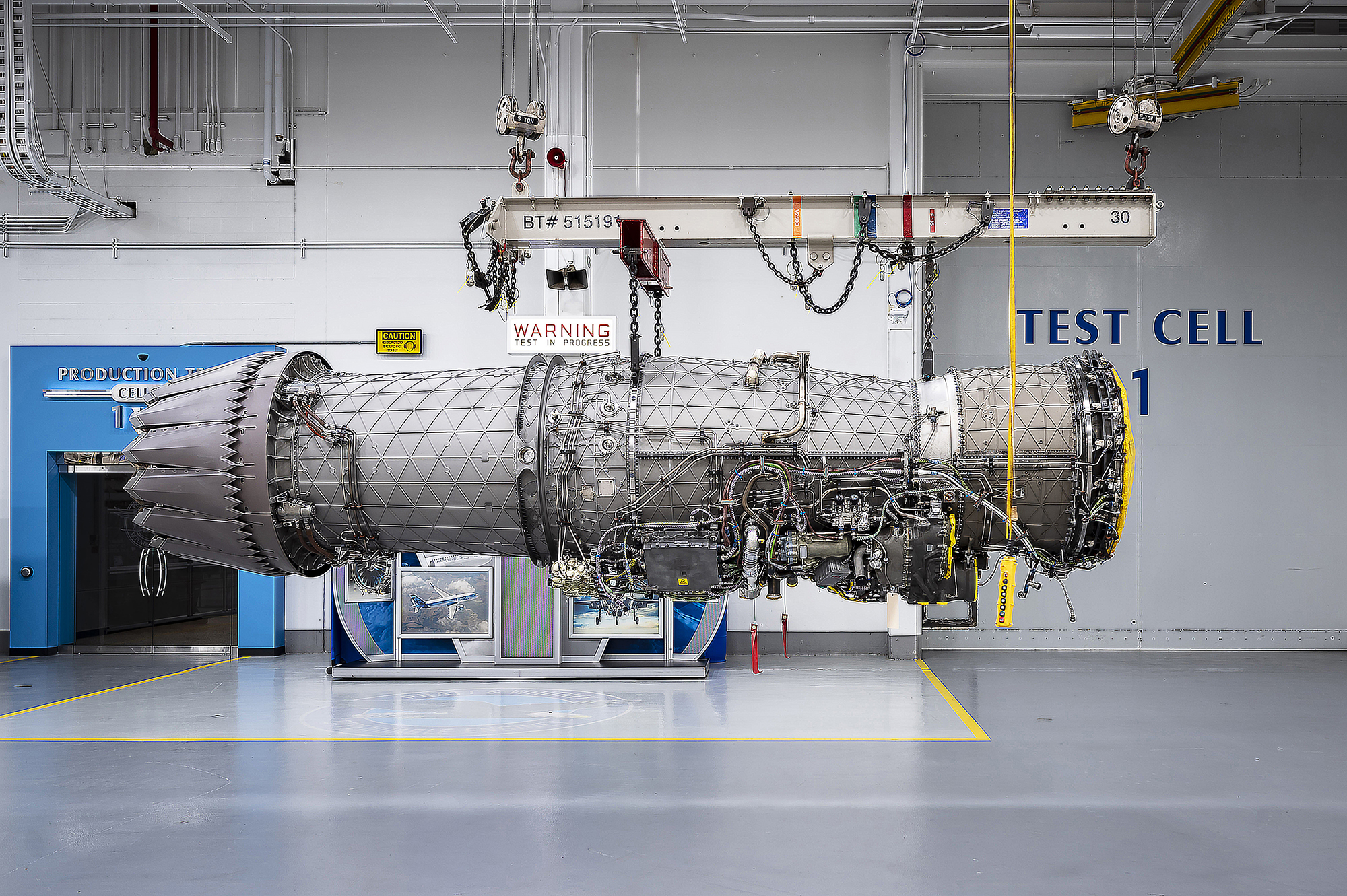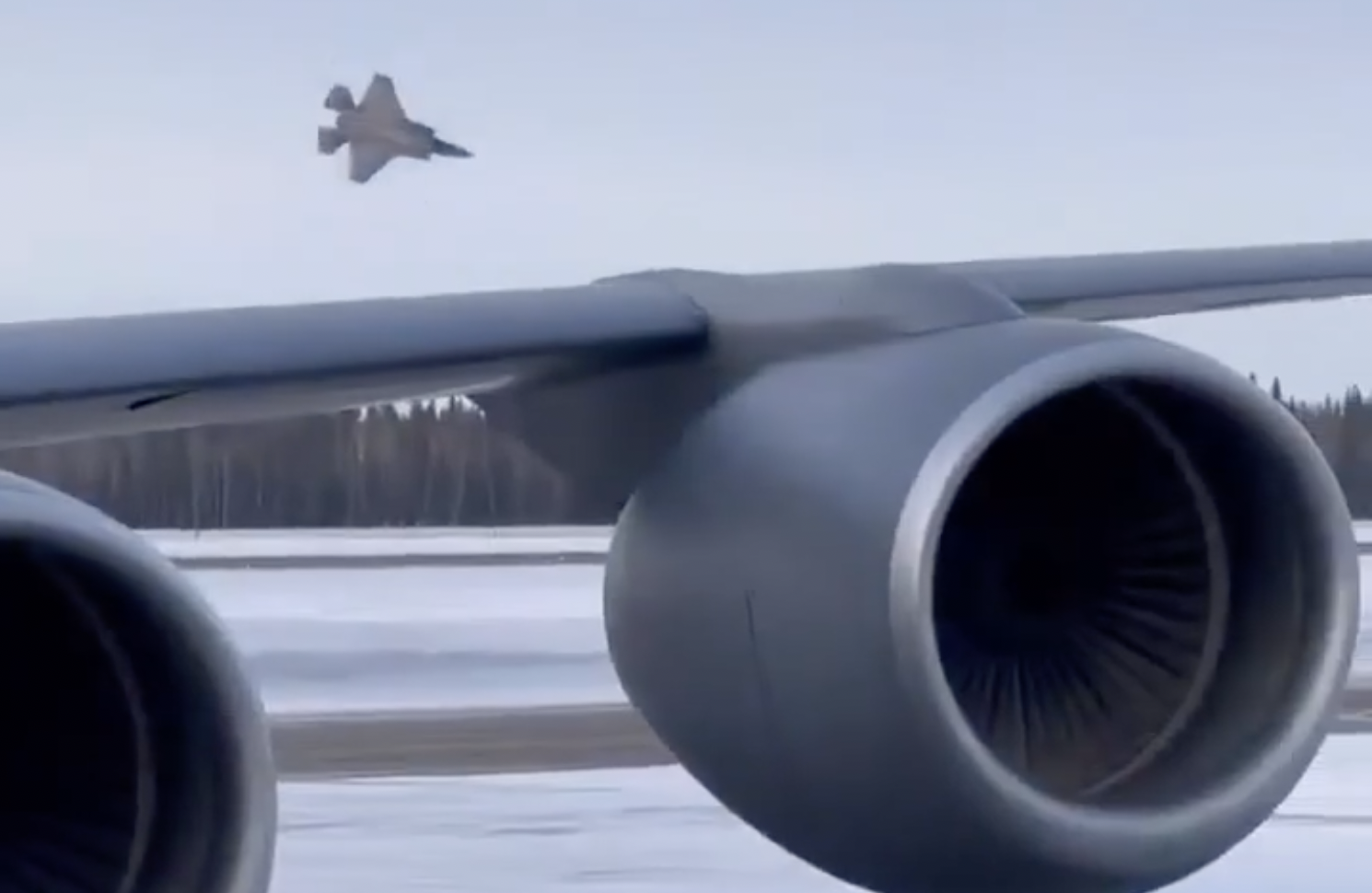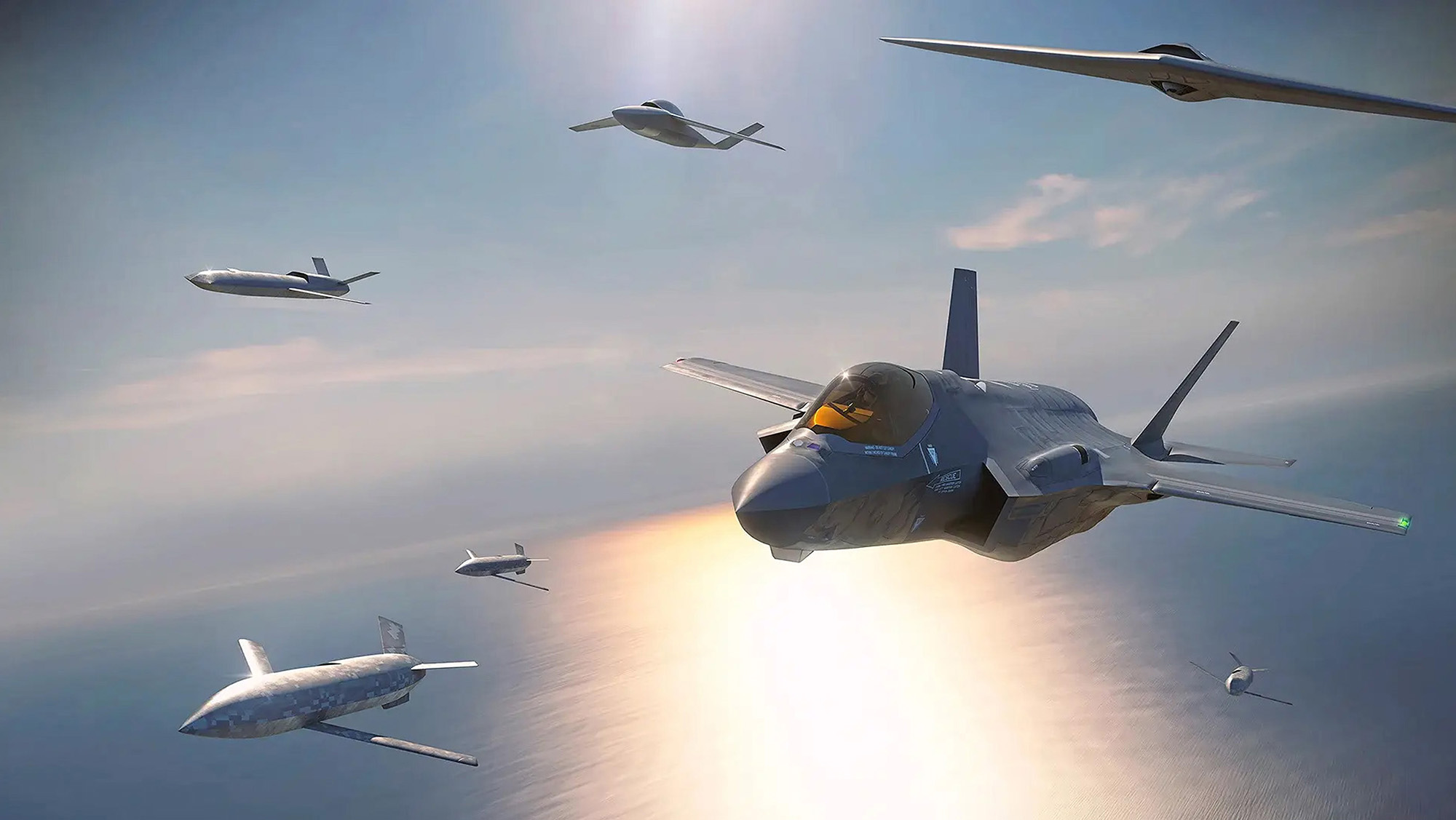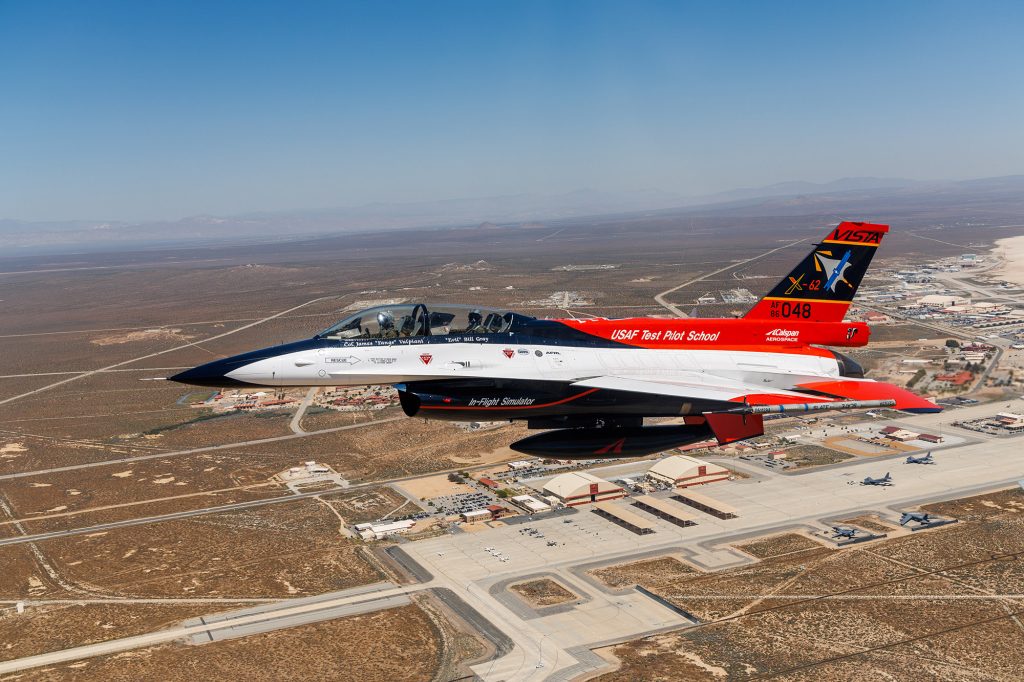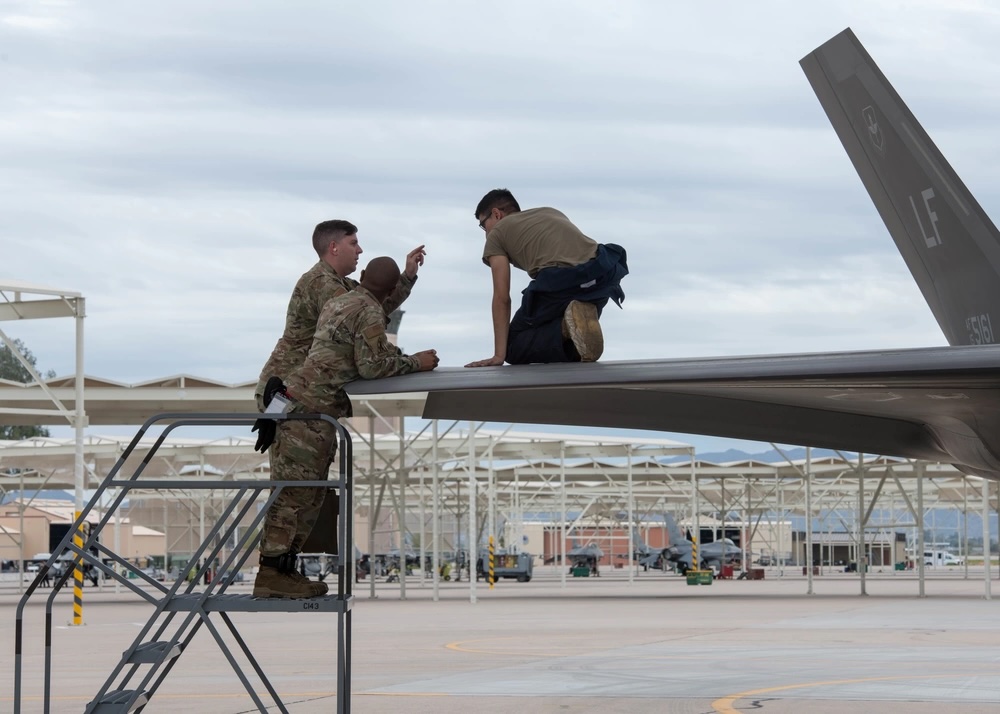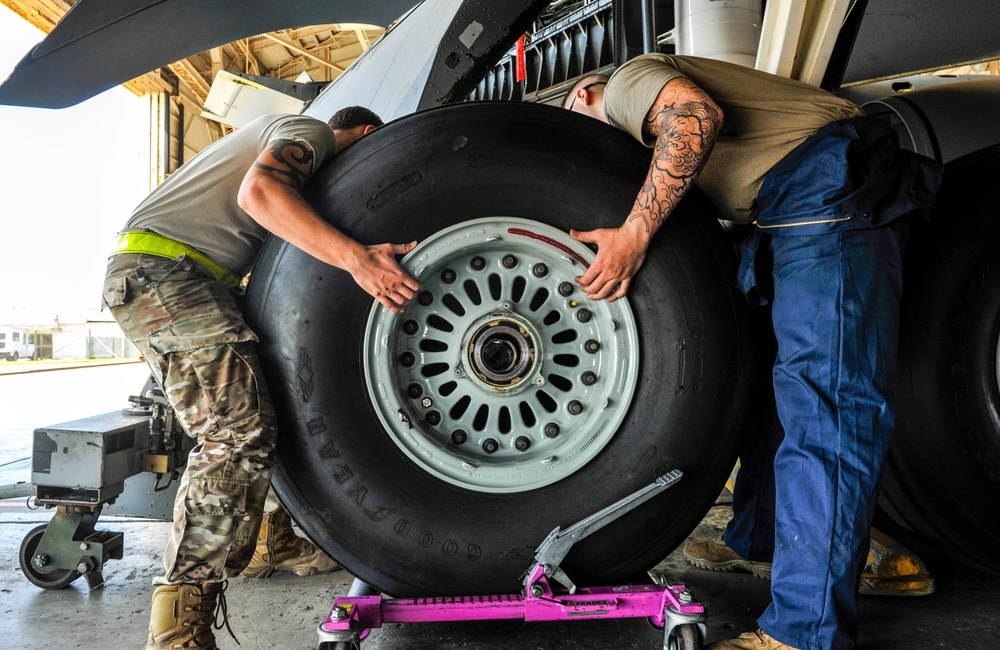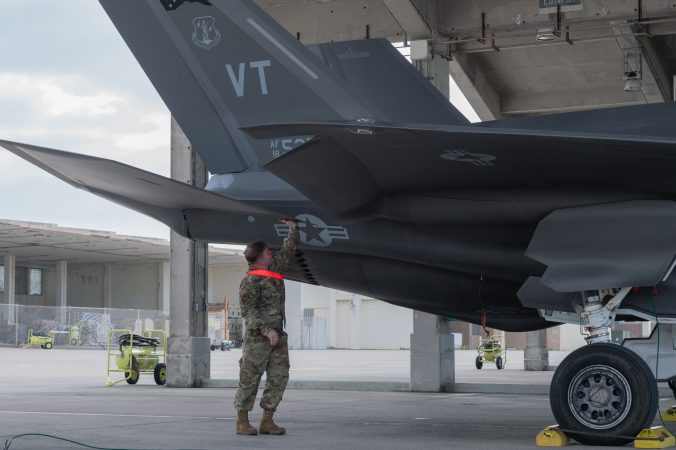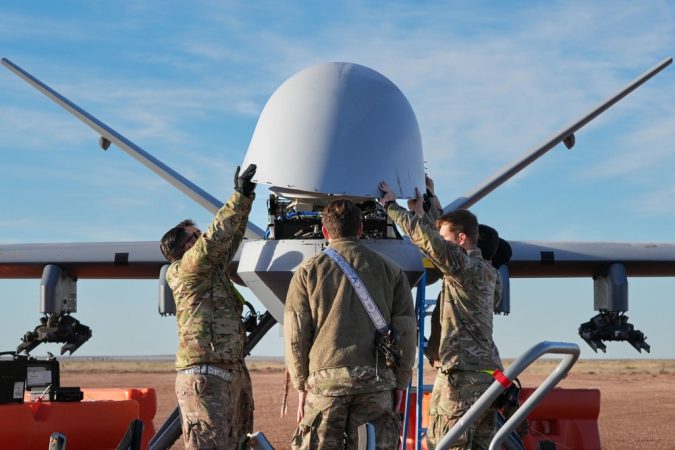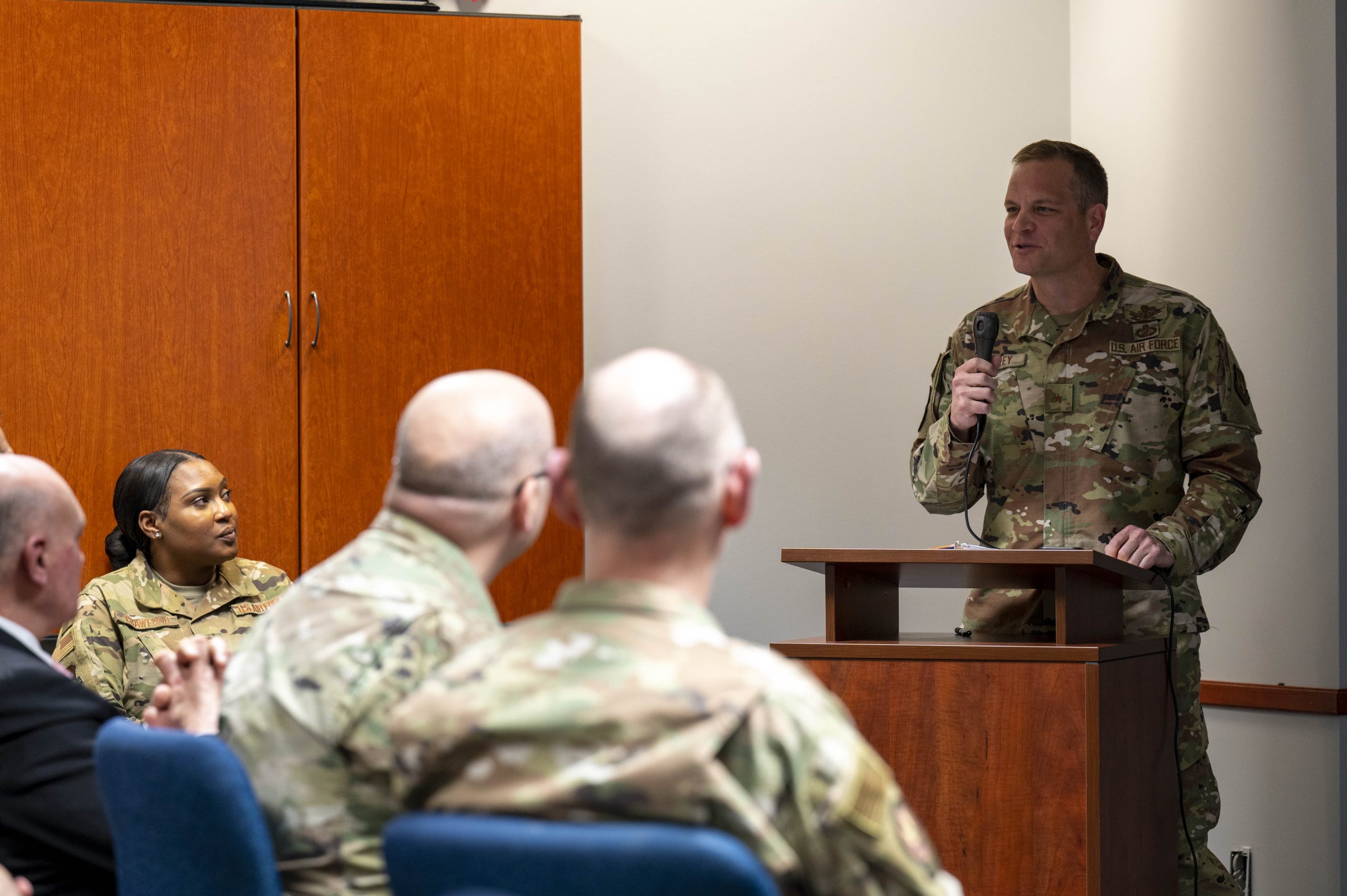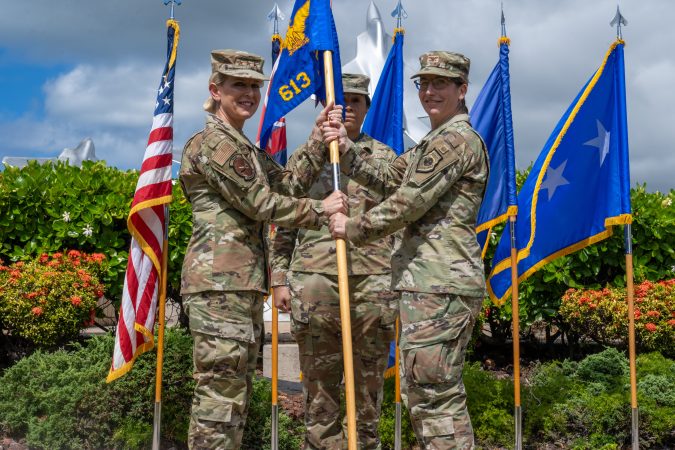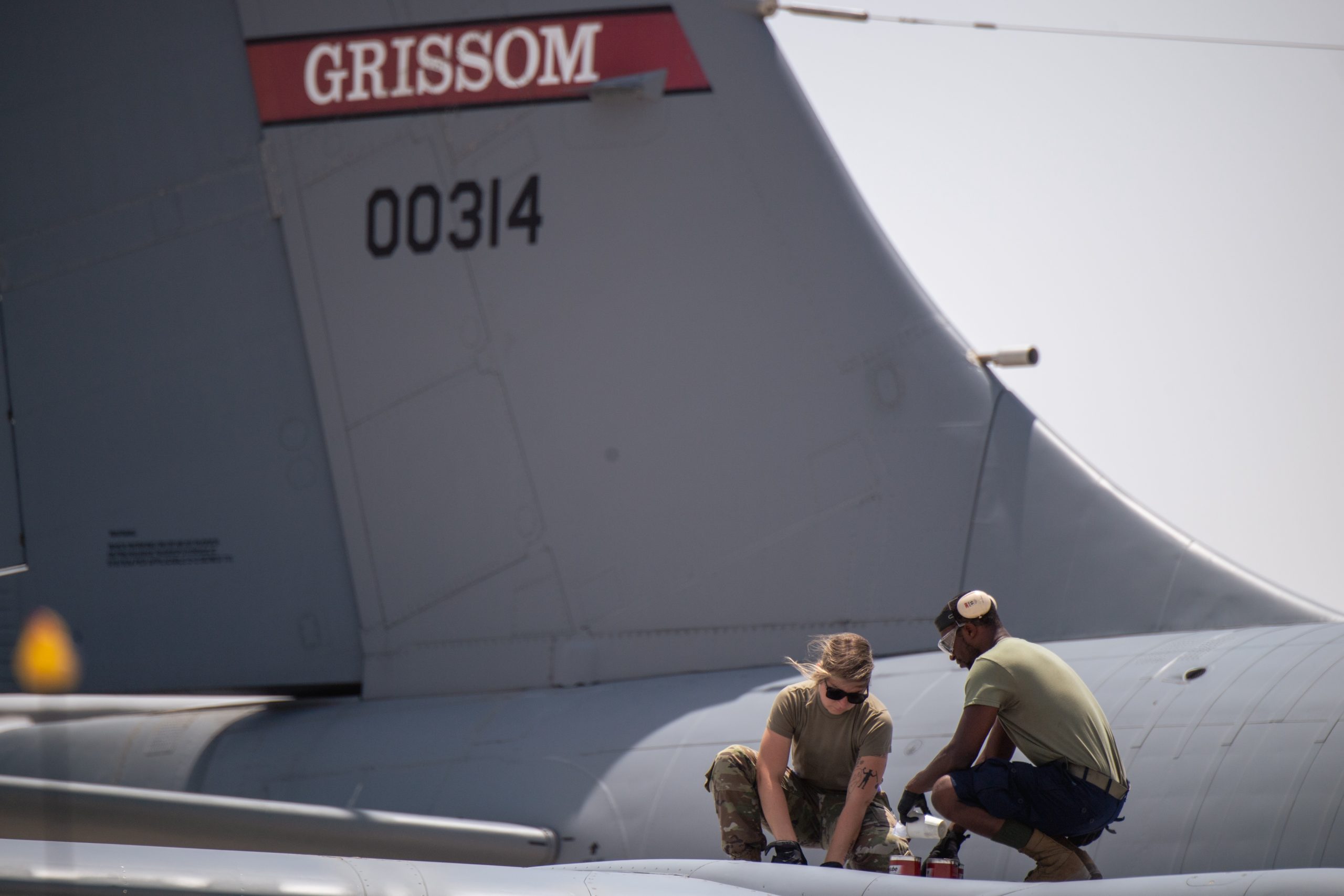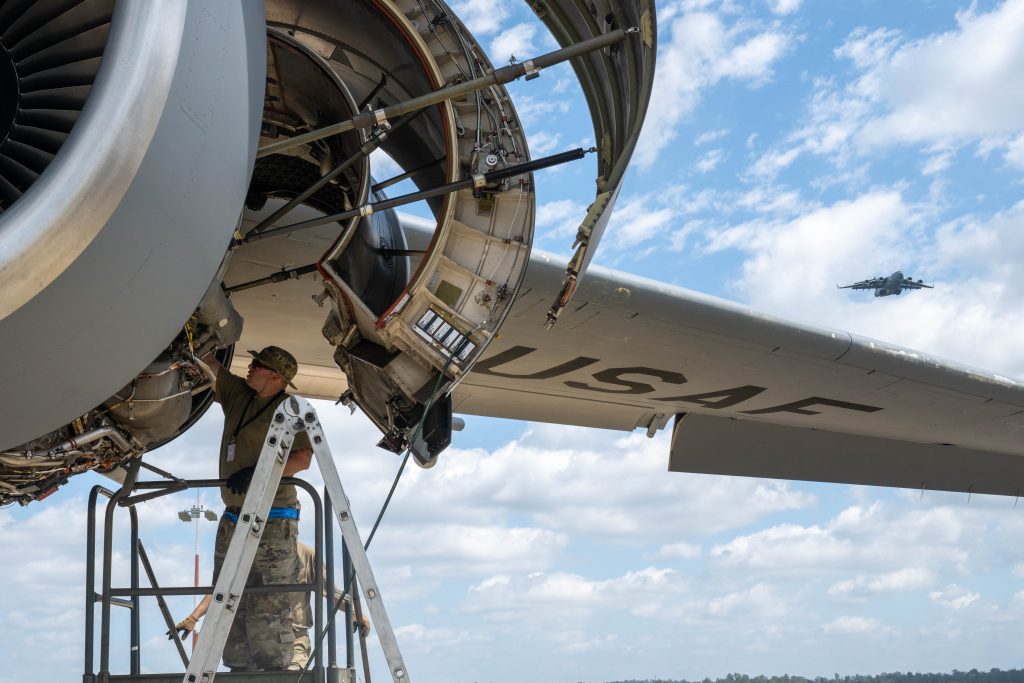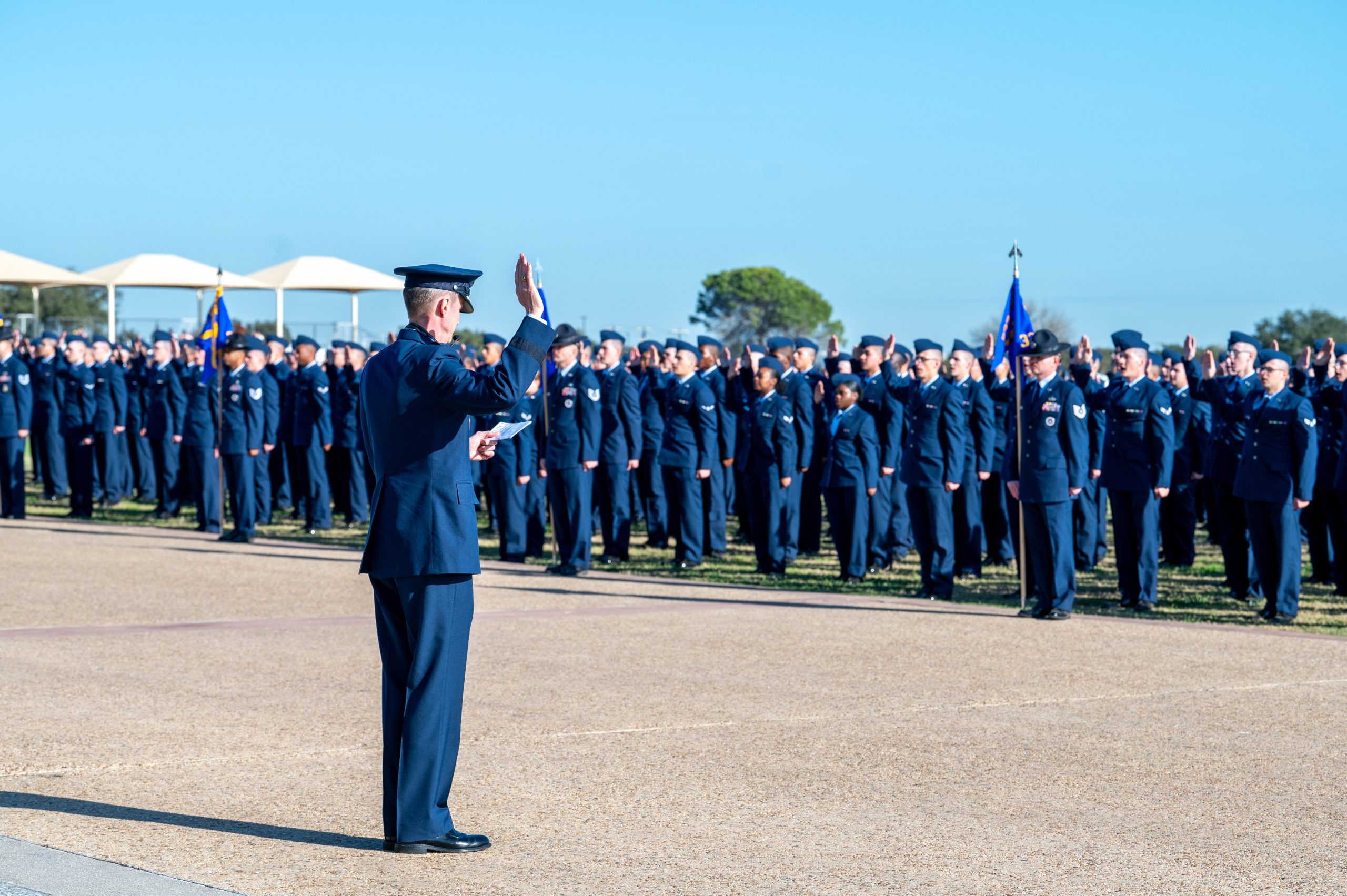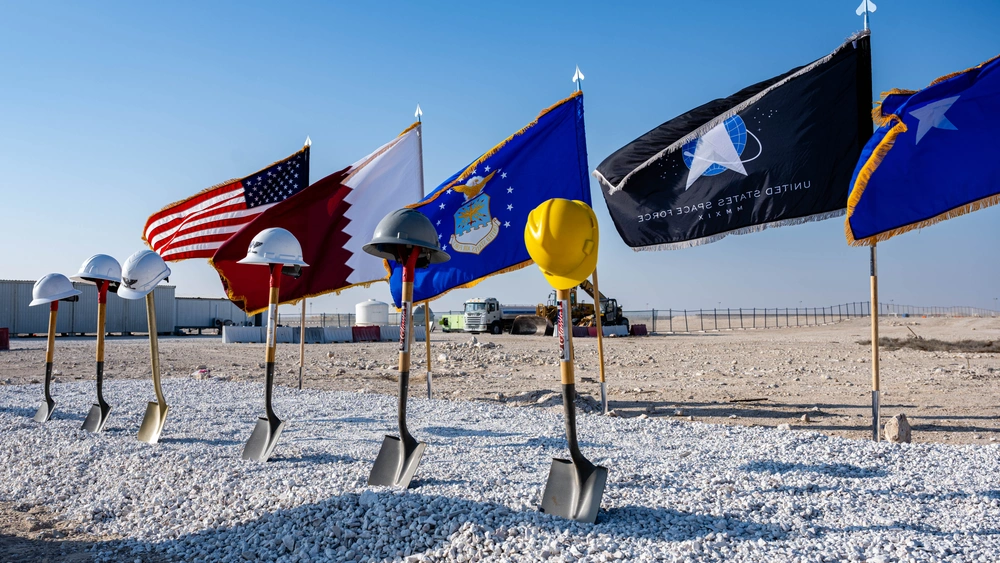GE Aerospace and Pratt & Whitney received matching $3.5 billion contracts to prototype their versions of the Next-Generation Adaptive Propulsion engine this week, and the CEO of Pratt’s parent company, RTX, said things are looking up for the military engine business, even if the platform that could use NGAP is in some doubt.
“We’re continuing to develop our NGAP solution,” Chris Calio, RTX president and CEO, said on a company earnings call Jan. 28. “This funding will help us continue … to drive down risks on the key requirements” for the program. “With that award, we think we’re going to have a very competitive offering … regardless of where NGAP is in the timing.”
NGAP was originally planned to be the engine for the Next-Generation Air Dominance Fighter, the Air Force’s crewed stealthy platform meant to succeed the F-22. It includes technologies developed under the Adaptive Engine Transition Program, in which Pratt and GE Aerospace prototyped powerplants that could serve as a mid-life propulsion upgrade for the F-35. But because not all variants of the F-35 could use the AETP engines, the program was halted and the remaining resources put toward NGAP.
Yet last summer, the Air Force put a “pause” on NGAD. Frank Kendall, who stepped down last week as Secretary of the Air Force, said the factors contributing to that move were the NGAD’s extremely high unit cost and concerns whether changing technology meant it was still the right approach for future air superiority. Kendall deferred the decision on NGAD’s future to the new Air Force leadership under President Donald Trump’s administration, which has not indicated when it may make any decisions about it.
In a contract announcement, the Pentagon described the new NGAP deals as “technology maturation and risk reduction” efforts, the same phrase used to describe work being done on NGAD by unnamed airframe contractors while awaiting an NGAD decision by the new administration.
“The work includes design, analysis, rig testing, prototype engine build and testing, and weapon system integration,” the Pentagon said in announcing the NGAP awards. “The contract modification … is focused on delivering a state-of-the-art propulsion system with a flexible architecture that can be tailored for future combat aircraft operating across various mission threads; and digitally transforming the propulsion industrial base.”
Officials have said little about the NGAP engines, but they have noted the powerplants will be smaller than the F135 engine that fits the F-35, and smaller than the AETP engines.
A government official told Air & Space Forces Magazine, however, he is concerned there are no guarantees the NGAP engines will ever be produced.
Trump technology advisor Elon Musk has been critical of the F-35 fighter and has called for eliminating fighter pilots and moving directly on to autonomous systems, which might not require the advanced propulsion NGAP offers, the official said.
“You’ve got a potentially hostile administration that may dump NGAD,” he said, “and in the last 20 years, we dropped three new [fighter] engines,” referring to an alternate engine for the F-35 developed by GE and the two AETP prototypes.
“If we don’t do NGAP, the ecosystem for cutting-edge military engines is going to fall behind” what is happening in China, Russia and elsewhere, the official said. “We can’t discount Chinese engines anymore,” he added. “They’ve invested to fix their problems” with designing and maintaining high-performance fighter engines.
Yet Calio projected an optimistic outlook on military propulsion. The Air Force has tapped Pratt to develop an Engine Core Upgrade to the F135 that will, to a lesser degree, meet some of the increased performance needs of the Block 4 F-35. Calio said the ECU and the NGAP creates “a tailwind” for the military engine business.
“I see this as continuing to grow,” he said. He noted that the Air Force continues to fly older aircraft, and so “the aftermarket remains strong. So I’d say, by and large, this is a tailwind for Pratt. And [we’re] happy to see this funding being put in place over the next number of years to continue this development.” He also said Pratt got F135 sustainment work valued at $1.4 billion across 2024.
The engine GE developed for AETP was given the designation XA100 and Pratt’s was the XA101. It is expected that the NGAP engines will be the XA102 and XA103, respectively.
